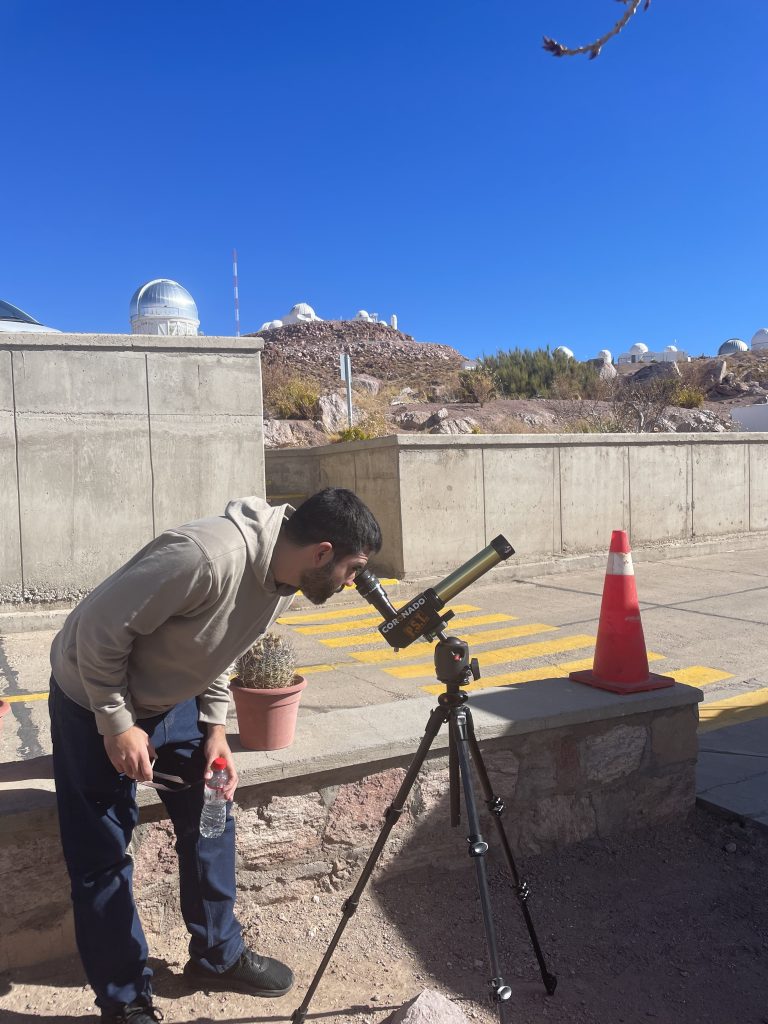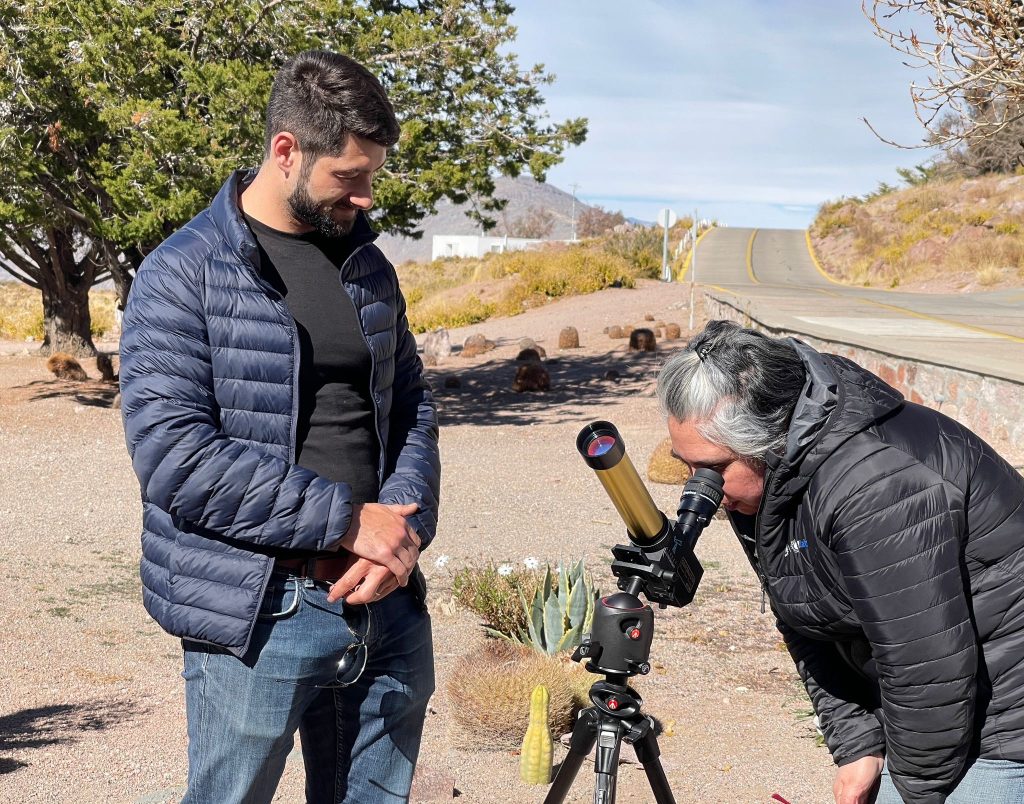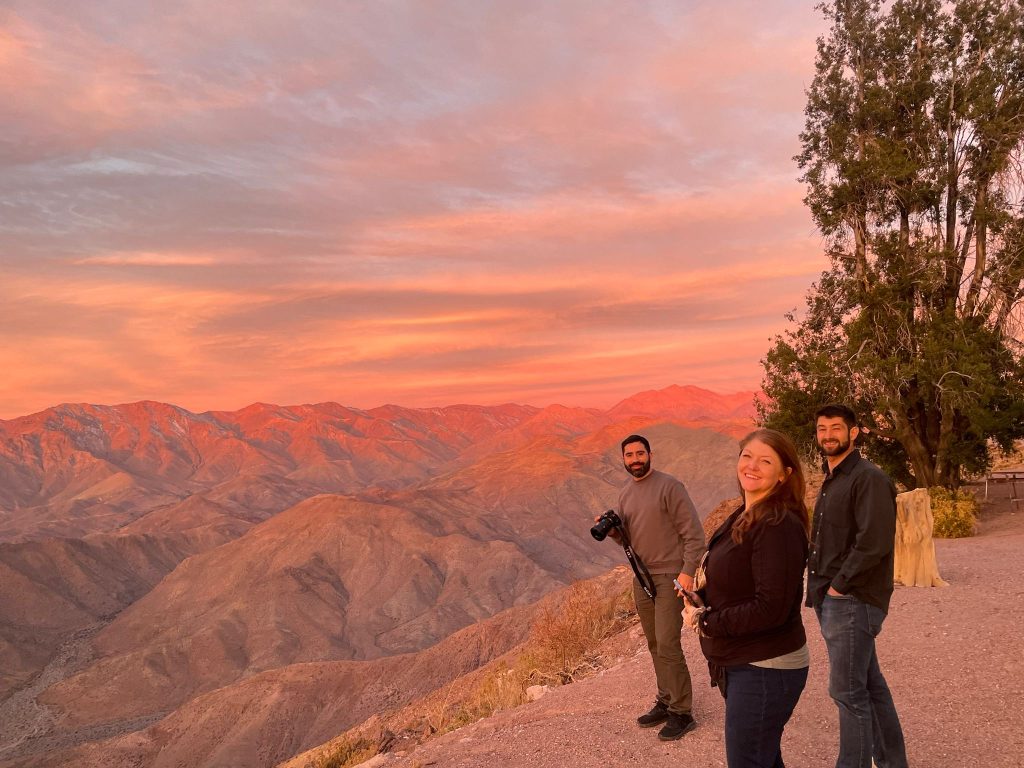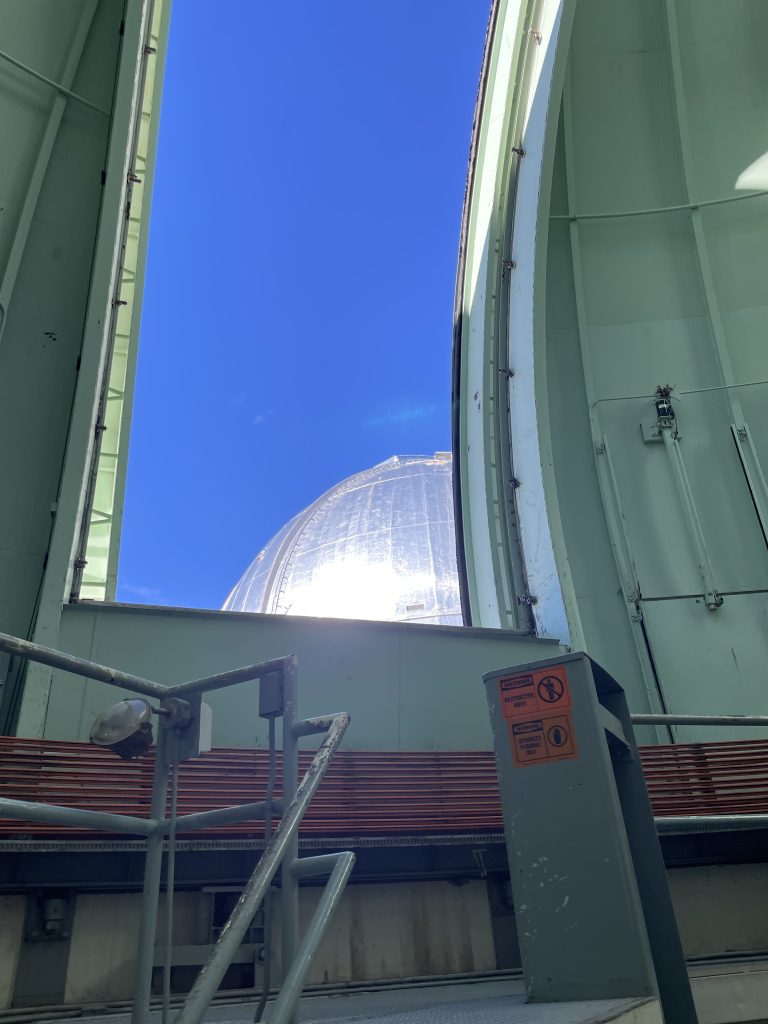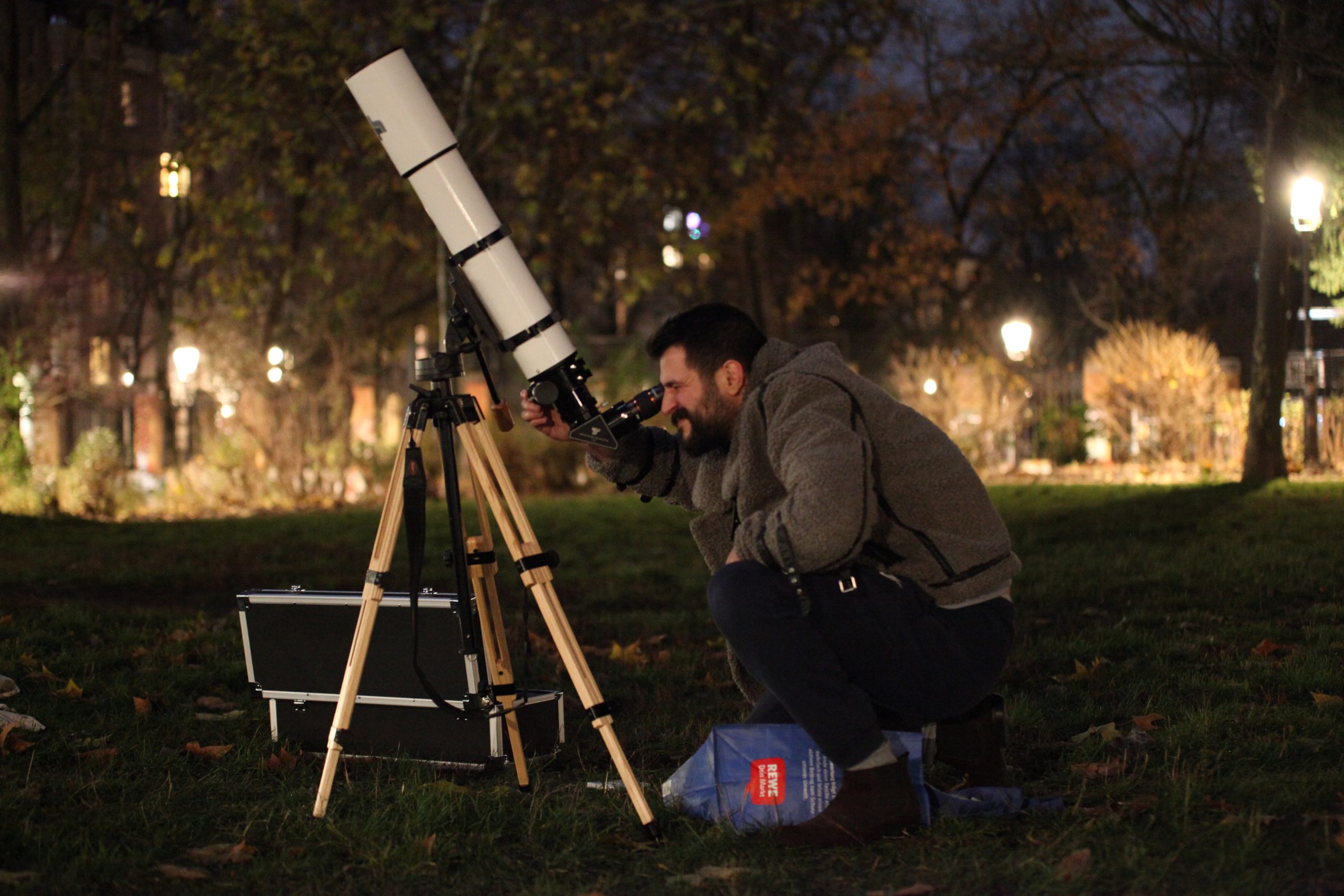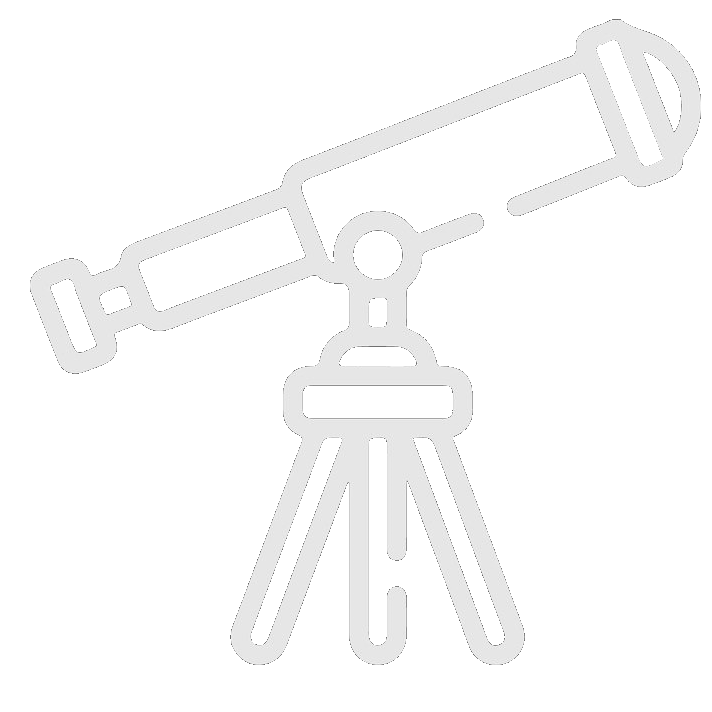How many sunrises did the tall dome see?
Sleepy, it shutters its vertical eye
Pink orange light reaches around the horizon
The small humans inside click at controls
sleepy too, following through
with a tradition
to elicit
the mysteries above, within, and long ago
An echo of faith
Climb we not still to the summit
to ask wonder and answer
how this world was born?
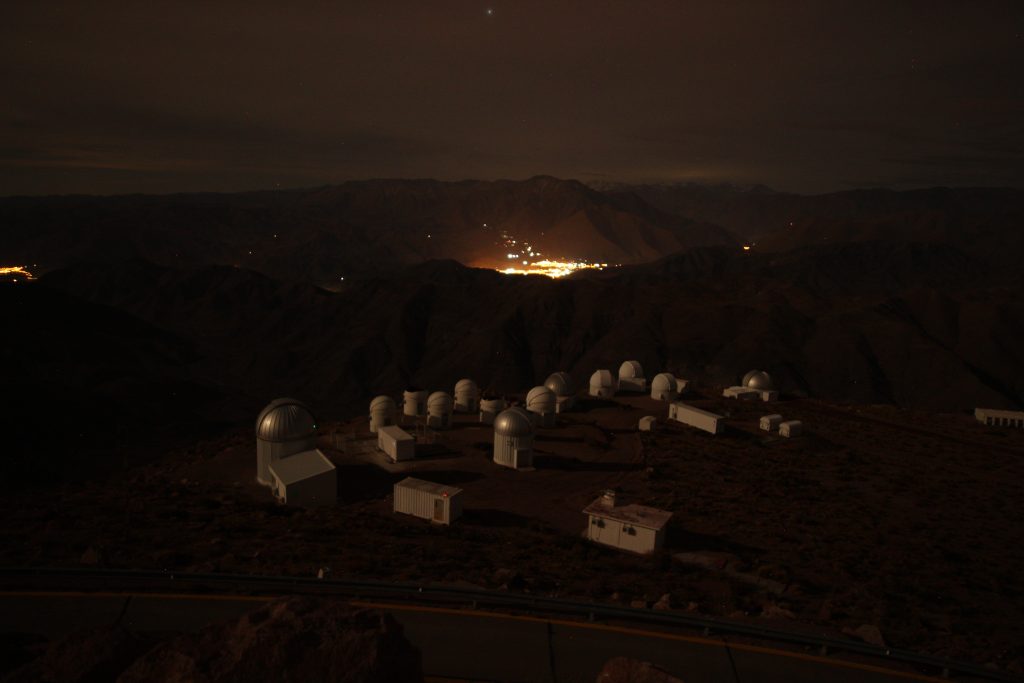
After a fascinating night staring at the sky, we’re getting ready to visit the mushroom farm. The mushroom farm is a large group of smaller telescopes sitting underneath the Victor Blanco Obseratory. The telescopes range from 40 cm to 1 meter diameter, and are often built by individual universities.
I sit down in the canteen early, just in time for sunrise. I grab an empty seat next to the window, and I open the blinds. I peer out across the mountains, a vast stare, totally quiet. Morning light like this is only experienced a few times in ones life. More employees come in the door and sit down for breakfast. One goes up to the window and closes the blinds again. In fact, the sunbeams are coming through the window and making an annoying glare. The most beautiful sunrise of my life is routine for them.
One of the telescopes on the mushroom farm is a GONG https://nso.edu/telescopes/nisp/gong/ installation (the Global Oscillation Network Group). These telescopes work together to observe the sun 24 hours a day, looking for seismic activity. NOAA uses it to make space weather predictions that can impact our satellite communications. Laura-May is particularly excited about this telescope because she uses it in her research. She’s requested special permission to see it, and she wasn’t sure if we could manage with our tight schedule.
Now, we’re walking up to a shipping container. We are greeted with a sign adorned with acronyms. The groundskeeper opens the door. Laura-May pauses, her heart racing, then she swings the door open and leads the charge inside. Inside, there’s only room for 2 or 3 people to stand at a time. Near the door is a computer console with an unwelcoming hard plastic chair. The entire instrument sits on one table. It must be isolated from vibrations, heat, and light. Therefore, GONG is totally enclosed in a plywood box on top of the table. There is, distinctly, not much to see here.

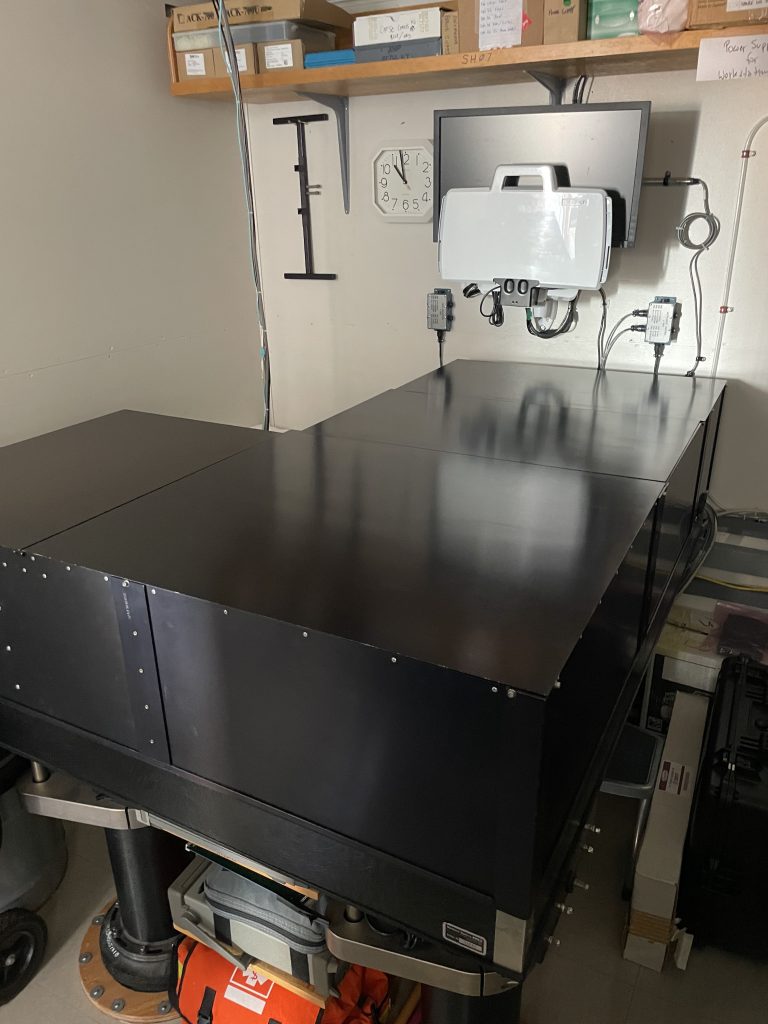
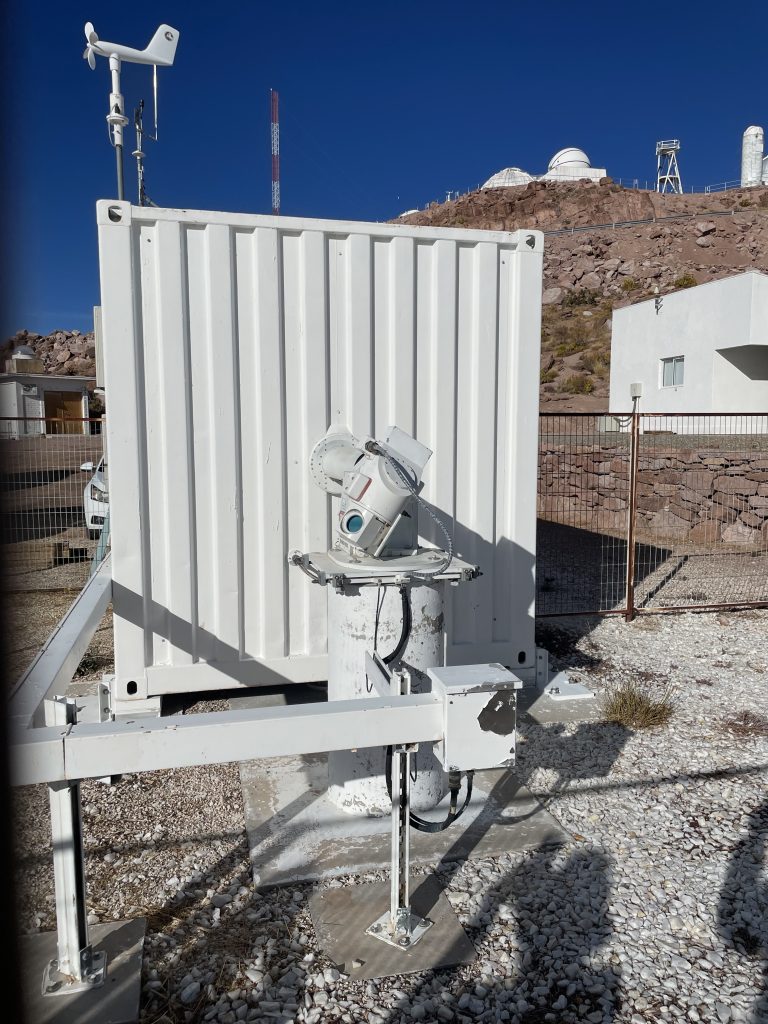
Around the back, we find a tube poking out the side of the shipping container, with a small, palm sized lens pointed toward the sun. The lens is a light metallic blue, the same color as the coating on my Coronado solar telescope.
This ultra-precise instrument, used around the world to study the sun, sits here, humble. One could easily mistake it for an airconditioning unit. And that’s what makes these places so incredible. It takes an enormous team of staff, working in shifts in harsh conditions, to keep these telescopes running, quiet and lonely in the desert.
At lunch time, energy in the whole group is running low. But I have an idea. I’d like to set up the solar telescope outside the canteen as all of the staff are finishing lunch. I ask for help translating to Spanish. Yasmin says, most people here have probably done this before, but it could still be a nice idea. I inhale my food, run back to my room to prepare the solar telescope, and then pitch the tripod between the canteen and the parking lot.
It is definitely the smallest telescope on the mountain.
Moisés and Fefo join me. “¿Quieres ver el sol?” I belch, with a smile on my face. It’s the only spanish I know. People look through, and I leave the details of the magnetic field for my colleagues to explain. I stand there, smile, and adjust the eyepiece. I can’t understand the conversation, but I can feel the excitement. Many people feel that they don’t have the time to look through the telescope. I tell Moisés to reassure them it only take a minute. Asking people a second time is effective – the hardest part about street astronomy is convincing someone to take a moment away from their day.
“She’s never seen this before.” Moisés exclaimed. “I can’t believe it.” But it’s true. Anywhere in the world you go, even at a world-class observatory, there are many people who have never looked through a telescope. I’m never surprised anymore. Most of the people here, they are not astronomers. They know a bit about the night sky, but they are experts on the equipment, not the cosmos. They are the engineers and technicians that, here on this rocky summit, help us learn more about the Universe. We explain that my solar telescope is similar to GONG, and this is met with a nod of understanding. They’ve kept GONG running for years, but maybe for the first time, the staff get to see what it sees.

